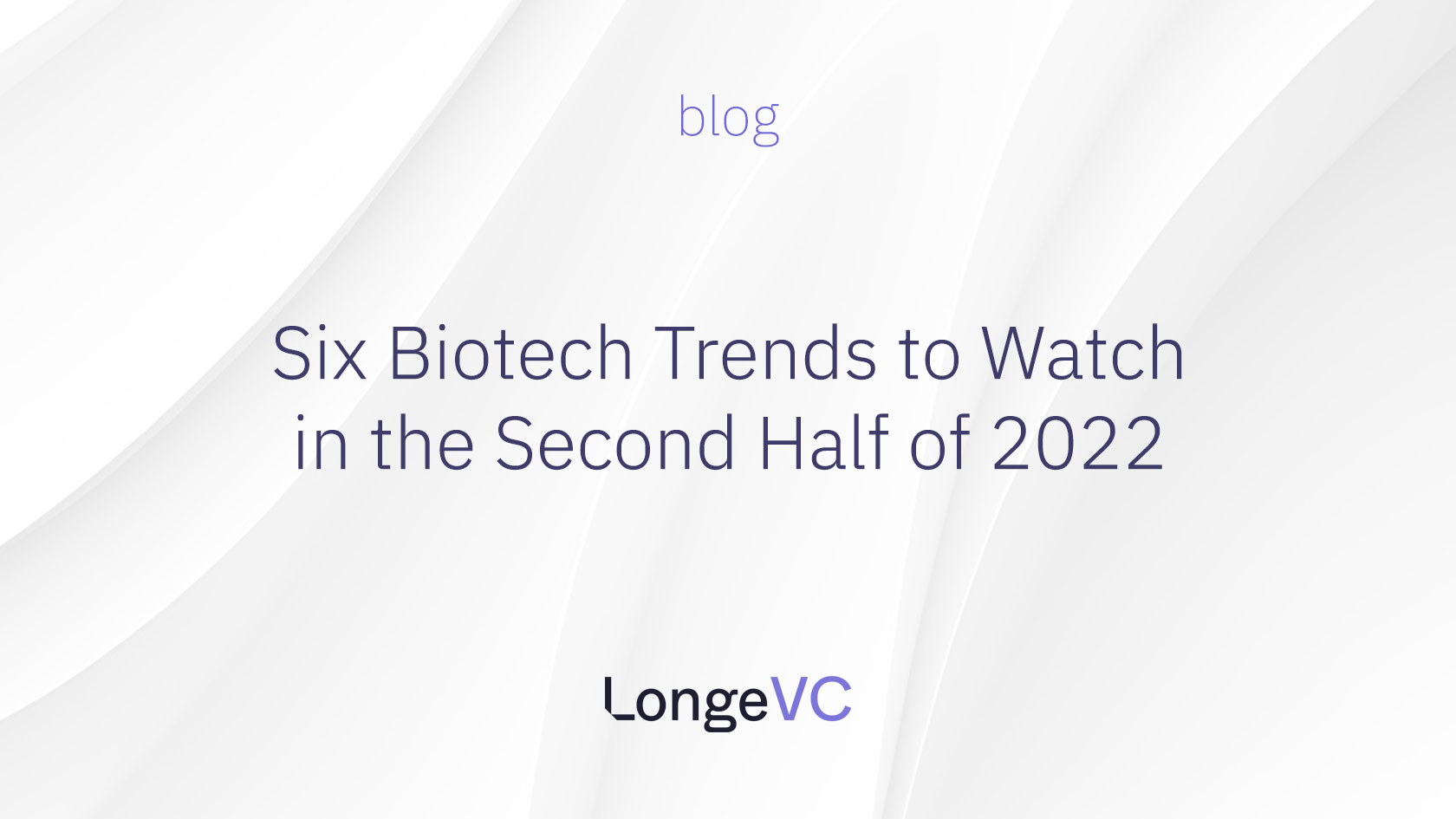The potential for innovation within the biotech industry has been widely visible with the practically unprecedented production and approval of the COVID-19 vaccine. It is a vaccination that affects the virus on a molecular level, unlike other vaccines that rely on live viruses to aid in creating antibodies. The new technology has many promising applications, including accelerating the development of an HIV vaccine.
The rapid development and spillover effects from the vaccine have captured the attention of mainstream media and the general public, helping to bring the often misunderstood biotech space as a conversation topic to family dinner tables and social media. At LongeVC, we are excited about this growing awareness and invite individuals to learn more about biotech. Here are some trends that we believe will shape the industry through the rest of 2022 and beyond.
Personalised Treatments
Medical treatments have long been developed for a mass audience. This has been the most cost-effective way for researchers to develop medications and treatments. However, this cost-effectiveness has now extended to customisable treatments based on an individual’s genetic makeup. While genetic customisation may have a higher upfront cost, a successful personalised result is more cost-effective than trying multiple mass-produced treatments with little to no progress.
The cost of genetic sequencing has plummeted from billions of dollars 20 years ago to a few hundred dollars today. Targeted treatments are now possible by unlocking an individual’s genetic code. Treatment options will evolve as advances continue, both in treatment development and genetic understanding.
Less Invasive Diagnoses
Screenings that once required an invasive visit with your physician or specialist are becoming simpler, quicker and more accessible. The ability to test for genetic or bacterial changes has led to advances in colon testing, breast cancer screening, thyroid levels, prostate flags and more.
With more accessible diagnostic tools comes earlier diagnoses and improved patient outcomes. For example, our portfolio company, AOA Dx, is creating a liquid biopsy test to detect ovarian cancer. This simpler screening is predicted to reduce fatality rates for this disease by half!
The availability of these tests also ties into the medical personalisation driven by genetic sequencing. The hardware of phones or laptops and telemedicine combined with these at-home treatments and diagnoses could make late-stage diagnoses a thing of the past.
Secondary Clinical Data Usage
The availability of clinical data in a digital format is growing exponentially. Medical files were once just that, hard files. Everything is digitised, providing wider access to information. Therein lies the issue – but also the opportunity.
Secondary clinical data usage is defined in an American Informatics Association White Paper as “non-direct care use of personal health information including but not limited to analysis, research, quality/safety measurement, public health, payment, provider clarification or accreditation, and marketing and other business including strictly commercial activities.”
Does the existence of data mean it’s available for anyone to use, regardless of origin? What if that data results in a global, society-changing breakthrough? Do you own the data that results from your medical treatment? Or is that owned by your doctor, the pharmaceutical company, or the insurer? Companies like Longenesis are working to maximise the potential of clinical data while ensuring the consent and engagement of data owners. Longenesis tools for secondary clinical data usage make a difference in rare disease diagnosis, chronic disease treatment options and more. As the medical system generates more and more data, tools that manage privacy and ownership will be vital for secondary usage success.
Longevity
Decoding the human gene has allowed us to tap into why people age. Biotechnology allows us to dissect that reasoning and overcome those barriers with systems that track the rate of ageing at the molecular, cellular, physiological and psychological levels. Longevity is one of our main focuses at LongeVC. We believe the industry has tremendous growth potential and will make a real difference for humanity.
Our portfolio company Deep Longevity is an example of an organisation developing “explainable artificial intelligence systems” for the emerging field of longevity medicine. It is intended to enable physicians to make better decisions on the interventions that could slow down, or even reverse, the ageing process.
Pet Health
People go to great lengths to care for their fur babies. They give us unconditional love and companionship, if for a limited time.
But what if that time together could be extended? Basepaws is an example of a company conducting genetic research to treat pets proactively. They’re starting with cats and asking pet owners to send samples of their cats’ DNA and oral microbiome samples, along with health history, to help develop ways to extend the animal’s life.
Basepaws is also conducting research into lymphoma, dermatitis, diabetes, Mellitus, and other diseases. It’s similar to the personalised care and genetic testing done on humans to extend their lives.
Artificial Intelligence
As we mentioned regarding secondary clinical data, so much information is available in the modern medical system. Every appointment, consultation or medication choice creates a new data point.
Research is all about collecting data in the quest to prove or disprove a hypothesis. Applying that data through artificial intelligence creates opportunities to run experiments at unprecedented speed with incredible accuracy outside the confines of traditional wet labs. Lab work will continue, but the dependence on those labs will diminish as data improve.
It’s being done now by companies like LongeVC portfolio company Insilico Medicine. This pharma-technology company is working to accelerate drug discovery and development through artificial intelligence and currently has the world’s first AI-developed drug in human trials. AI has the potential to bring novel treatments to patients while lowering costs and increasing the probabilities of success.
These are just a few things we think are worth watching in 2022. There is so much more where to explore in the biotech space. We will stay abreast of all the advances in biotechnology, so make sure you subscribe to our blog using the form below to stay informed.
